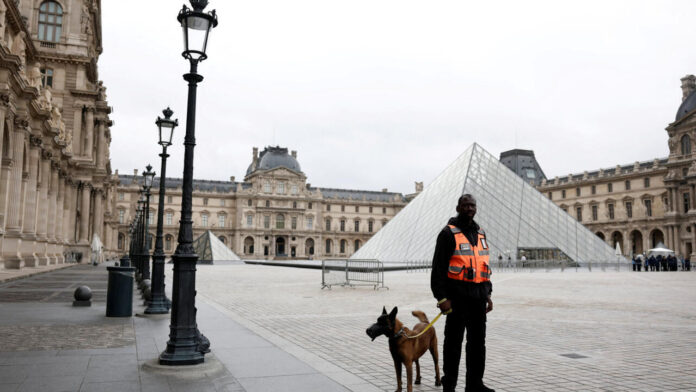The robbery in broad daylight at the Louvre on Sunday morning is one of the biggest, most brazen museum heists in recent memory.
At 9:30am, an alleged “strike team” of four professional burglars drove to the banks of the Seine and set up a cherry-picker beneath the windows of the Musée du Louvre: a feather in France’s cap and one of the most famed and prestigious museums anywhere in the world.
The cherry picker carried two thieves disguised as builders to the first floor, where they forced open a window with an angle grinder and entered the gilded Galerie d’Apollon – a masterpiece of Baroque architecture that holds some of France’s most prized jewels, many of which belonged to monarchs and leaders at different times in history.
Read moreThieves steal eight objects from Louvre in daring daytime heist
The robbers went on to smash the display cases that held the jewels and take nine pieces said to be of “inestimable heritage and historical” value. By 9.38am, they had vanished on two powerful scooters, leaving behind a pair of gloves, two angle grinders, a blow torch and a walkie-talkie.
The stolen pieces include a pearl and diamond encrusted diadem, a sapphire tiara, necklaces adorned with gemstones and delicate brooches dripping with hundreds of precious diamonds.
But in their getaway, the thieves dropped the crown of Empress Eugénie, wife of Napoleon III, who reigned from 1852 to 1870. The dazzling crown, decorated with gold eagles, studded with diamonds and emeralds, was found slightly damaged outside the Louvre shortly after the thieves had fled.
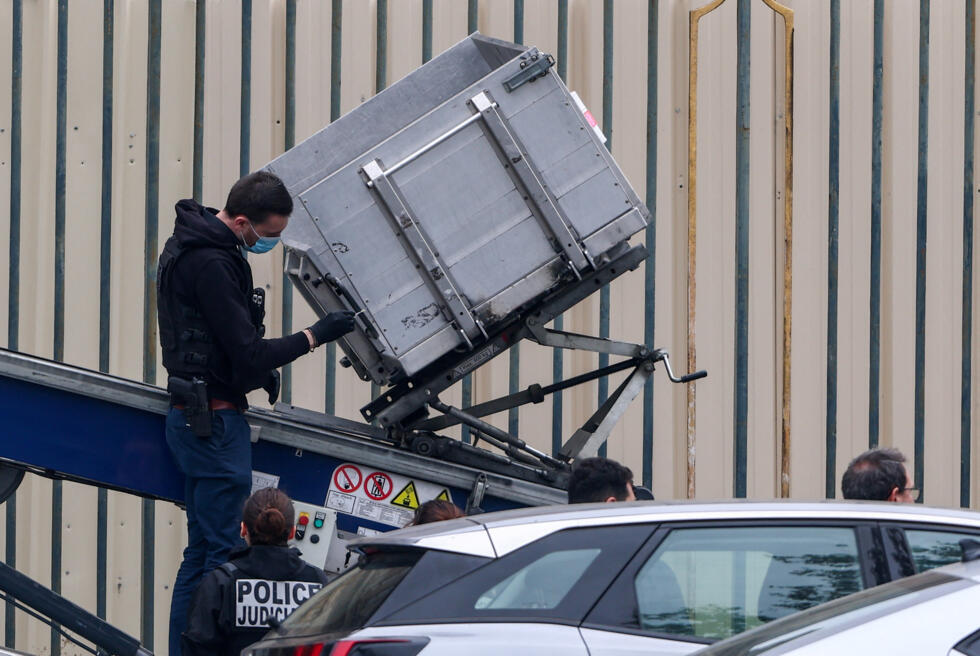
The audacious theft took between four and seven minutes: roughly the time the average Parisian would take to brew a morning cup of coffee and have their first sip.
It was a scene straight out of a heist movie and prompted a wave of alarm at the museum’s clearly lax security, which France’s new Interior Minister Laurent Nuñez acknowledged was a “major weak spot”. French opposition leaders went so far as to call the theft an “unbearable humiliation” that cast the country in ‘deplorable light’.
While that may sound like hyperbole, it’s true that The Louvre is a large source of revenue for the city and one of the country’s biggest attraction for tourists, who flock from around the world to see the famous paintings and objects it houses. The museum remained shuttered on Monday, with no clear date announced yet for its reopening.
Read more‘Police are racing against the clock’ to recover the jewels stolen from the Louvre
In total, the Louvre generates annual revenues ranging from €200 million to €250 million in a typical year, combining all income streams. Its collection was last valued at 35 billion – although most art experts would agree that putting a precise value on the culturally and historically objects within its walls is near impossible. The stolen jewels represent millions of euros of that worth.
The crown jewels may be lost forever
Christopher Marinello is a lawyer and an expert in recovering stolen, looted, and missing works of art. In 2013, he founded Art Recovery International, which according to its website has recovered lost artwork valued at more than $500 million on behalf of different institutions including museums, governments and cultural institutions.
He described the robbery as a “well-planned smash and grab”, adding that no one would touch the stolen jewels as they were. Unfortunately, Marinello’s prognosis for the jewels was grim.
“There is a small chance some buyers in certain countries would buy the jewels as they are, but that’s unlikely,” he said.
“It’s not a stolen Picasso, which needs to be kept intact, or its worthless,” he added.
Marinello explained that traditional art – paintings, sculptures and the like, have to be preserved in as near perfect quality as possible to retain their value. In those cases, criminals will sell the paintings – likely for a fraction of the price – to underground art dealers, or in some cases, trade the art for weapons or other contraband.
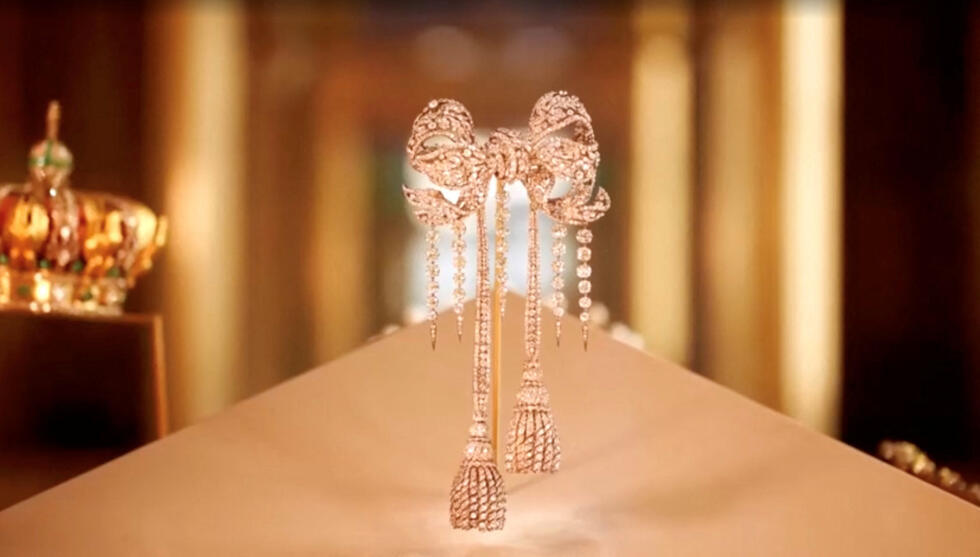
But jewels are different. Given the ease and expertise with which the robbers looted the Louvre, Marinello said, they may already have a system in place to break down the jewels and sell the gold, diamonds and precious stones in pieces to buyers.
“It isn’t hard to fly to Israel, Antwerp or India and simply have them recut,” he said. “Once that’s done, they’re instantly unrecognisable. No one would know where they came from, no one would know that they were the crown jewels.”
Marinello cited the story of the gold toilet stolen from Blenheim Palace, another movie-like heist which took place in the UK, where thieves ripped out a 4.8m euro solid gold toilet from a hardwood floor and fled the scene in a stolen Volkswagen Golf.
“As they were leaving the museum they were breaking up the solid gold toilet in pieces. Bits were even found in the car later,” he said.
One of your browser extensions seems to be blocking the video player from loading. To watch this content, you may need to disable it on this site.
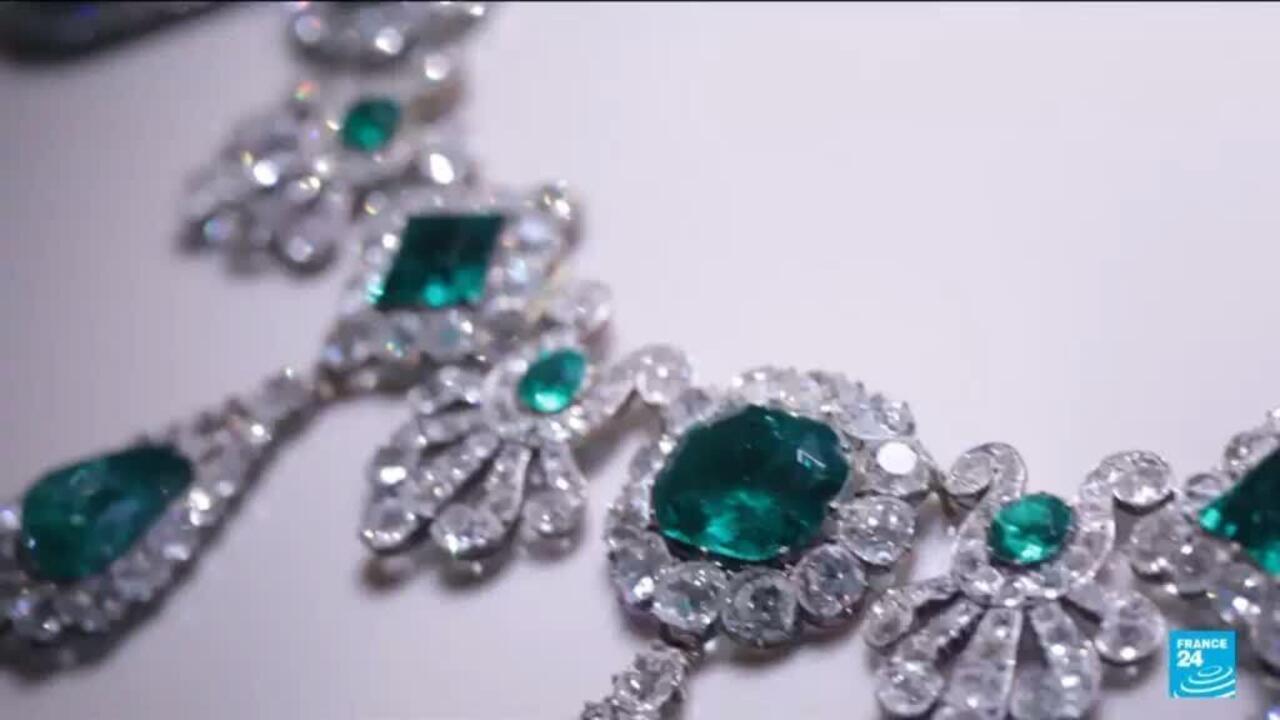
Three men were eventually arrested for the robbery, but the gold had long been melted down and sold in pieces.
A similar event took place in 2017, when a 100 kg gold coin known as “Big Maple” was stolen from the Bode museum in Germany by a group of four men, using a skateboard and a wheelbarrow. The men were caught later, but the priceless artefact was long gone.
In a few rare cases – like the robbery at the Dresden Green vault – some stolen jewels were eventually recovered. However, it may be more likely that they will suffer the same fate as Big Maple and the Golden Toilet.
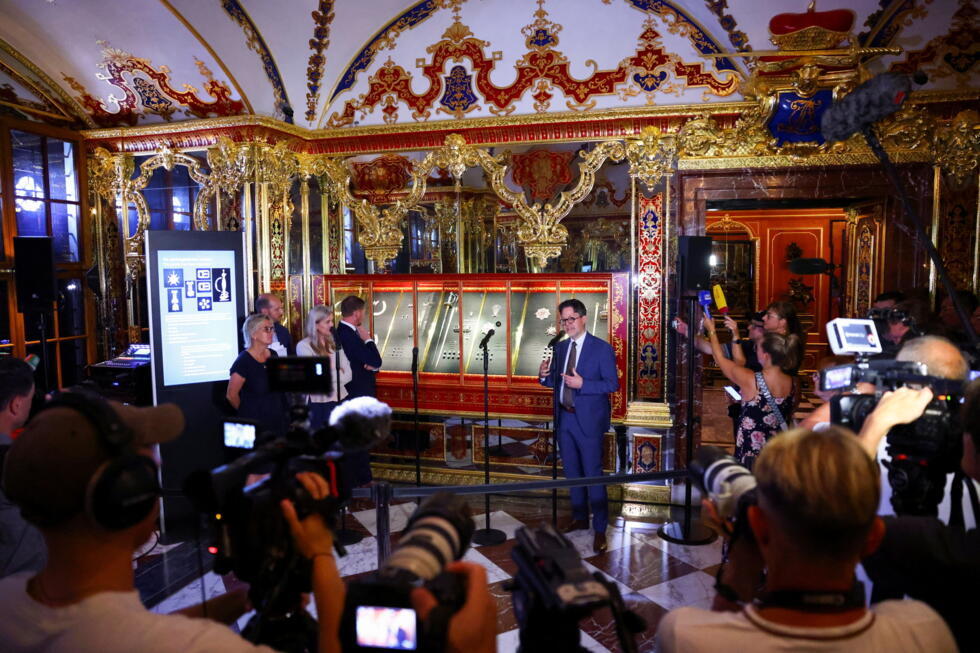
Although breaking down France’s crown jewels might be more difficult than melting gold, Marinello believes the jewels might never be seen in the form they were before they were stolen. The jewels – when broken down into pieces – will undeniably lose some of their value but given that many of the pieces have well over 1,000 diamonds each, the thieves would still make a handsome profit.
But Marinello has hope that the criminals will be caught.
“I’m fairly confident that the French police will catch the thieves,” he said, adding that that they’re likely already known to authorities, given that robbers at this scale work in known and often well-organised gangs.
A dire need for better laws, and better security
“People who rob at this level do it like a career. This is their job. They get to keep a big chunk of money, spend a few years in prison exercising and coming right back out and shopping at the next museum,” said Marinello, who argues that the penalties for art theft aren’t nearly strict enough.
“The first crime is for theft. The second is for the destruction of art and cultural heritage – not just against one person, but against millions of people and future generations, who have lost the opportunity to study and appreciate the lost items.”
Read moreLouvre jewellery heist sparks security debate in France
Marinello suggested that penalties and jail time should be increased to deter future heists at this scale, that countries must establish clear lines for regular theft – and theft which holds greater cultural consequence.
Paris is also one of the world’s luxury capitals. If it’s just about the value of the raw materials, one might argue that the robbers could have just stolen from a high-end jewellery showroom instead.
Marinello laughed off the idea: “I hate to say it, but Cartier is better protected than the Louvre.”
“I hope that this is a wakeup call to museums around the world to protect what they have. But it shouldn’t have had to happen … for people to notice.”
Source link



